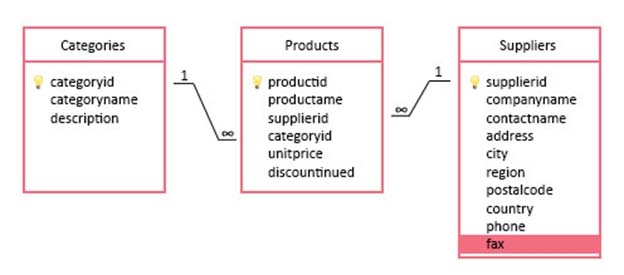

SIMULATION -
You have a database that includes the following tables. All of the tables are in the Production schema.
You need to create a query that returns a list of product names for all products in the Beverages category.
Construct the query using the following guidelines:
✑ Use the first letter of the table name as the table alias.
✑ Use two-part column names.
✑ Do not surround object names with square brackets.
✑ Do not use implicit joins.
✑ Do not use variables.
✑ Use single quotes to surround literal values.
Part of the correct Transact-SQL has been provided in the answer area below. Enter the code in the answer area that resolves the problem and meets the stated goals or requirements. You can add code within the code that has been provided as well as below it.
Use the Check Syntax button to verify your work. Any syntax or spelling errors will be reported by line and character position. You may check syntax as many times as needed.
BabyBee
4 years, 7 months agoStephan1010
4 years, 8 months agoKosteK
4 years, 7 months ago